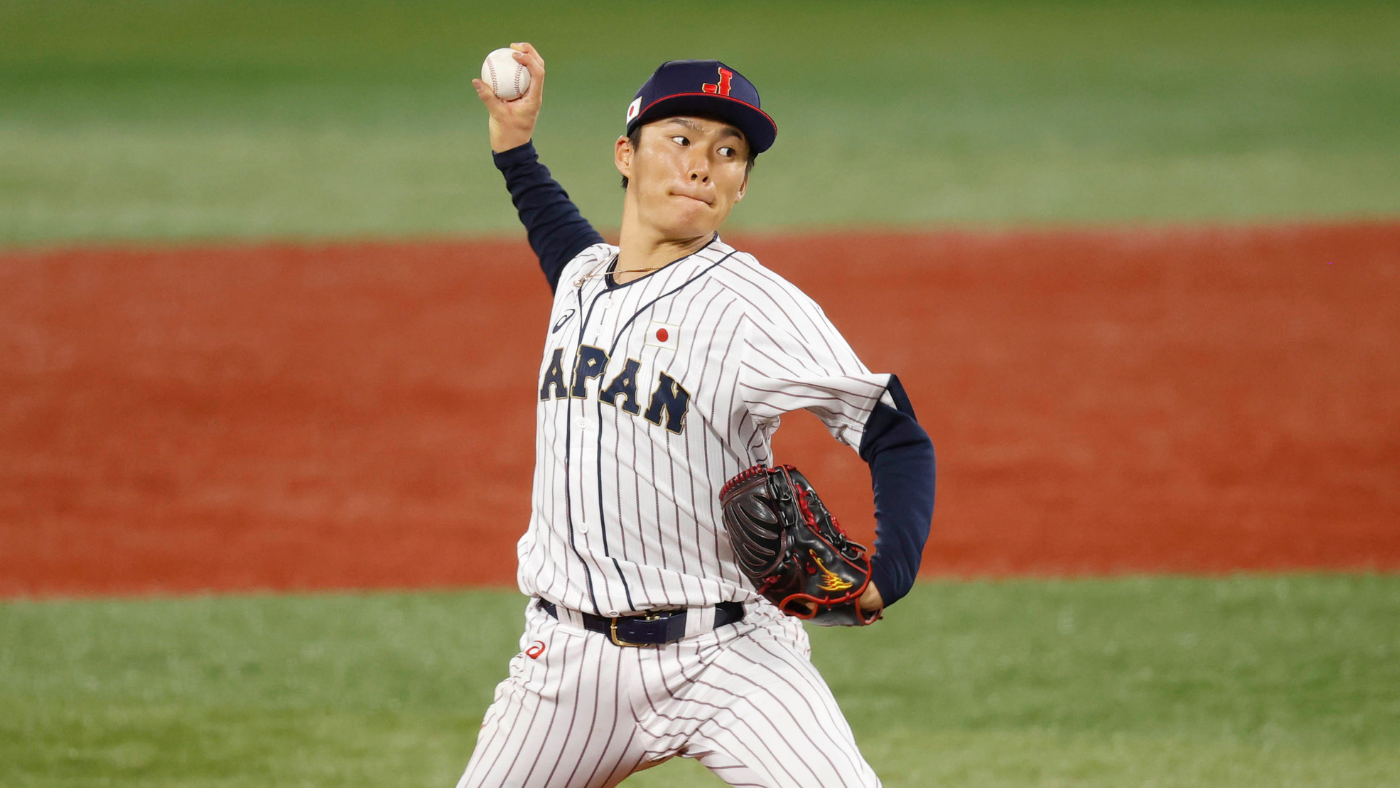Why Yankees, Mets, Dodgers are after Yoshinobu Yamamoto, the next MLB free agent to sign a record contract
Written by CBS SPORTS ALL RIGHTS RESERVED on December 12, 2023


Shohei Ohtani made his long-awaited decision over the weekend, joining the Los Angeles Dodgers on a 10-year pact worth $700 million, but that doesn’t mean Major League Baseball’s offseason is finished with recruiting tours for an elite free agent. Japanese ace Yoshinobu Yamamato is expected to meet with teams this week. (The New York Mets braintrust reportedly already took a meeting with him, flying to Japan to do so.) Yamamoto’s suitors list is believed to include all the large-market behemoths: the Mets, Yankees, Los Angeles Dodgers, Boston Red Sox, and so on.
Multiple league sources have told CBS Sports they expect the final bidding for Yamamoto’s services to clear the $300-million mark. And that’s without accounting for the posting fee going back to his NPB team, the Orix Buffaloes.
Should that deal come to fruition, Yamamoto’s contract will qualify as the largest ever given to a player transferring from Japan’s Nippon Professional Baseball league. (The current record belongs to Masahiro Tanaka’s $155-million pact with the Yankees back in 2014.) Furthermore, Yamamoto will have signed the second-largest pitching contract in MLB history, trailing only Yankees’ right-hander Gerrit Cole’s nine-year, $324 million agreement.
You might be asking yourself if it’s wise to invest so much in a pitcher who has never faced a big-league lineup. Below, CBS Sports has highlighted four reasons why teams feel confident enough to give Yamamoto a historic deal.
1. Unmatched track record
Put simply: Yamamoto is one of the world’s best, most accomplished pitchers.
Over seven seasons with the Orix Buffaloes, Yamamoto amassed a 1.72 ERA and the need for an extra-large trophy case. He wrapped up his NPB career by winning three consecutive Pacific Coast Most Valuable Player Awards, putting him in select company with longtime Seattle Mariners outfielder Ichiro Suzuki and right-hander Hisashi Yamada, a submariner with the Hankyu Braves who dominated the league during the ’70s.
Yamamoto also won three consecutive Eiji Sawamura Awards (the NPB equivalent to MLB’s Cy Young Award). The only other NPB pitcher to ever accomplish that feat was Masaichi Kaneda back in the ’50s. Yamamoto led NPB in wins, ERA, and strikeouts three years in a row, and in September he delivered his second career no-hitter in front of Yankees executive Brian Cashman, among other MLB power brokers. After all Yamamoto has put them through, you couldn’t blame NPB’s hitters if they throw a party once he moves on.
NPB is considered by talent evaluators to be the second-best league for a reason. In turn, excelling there usually bodes well for performing at a high level in MLB. There are exceptions to the rule. MLB teams are always weary of pitchers with well-below-average velocity, and hitters who struggle with inside fastballs. Yamamoto doesn’t have any such concerns, however.
2. Youth
Here’s the kicker: for as accomplished as Yamamoto already is, he only turned 25 in mid-August.
To put that into perspective, consider that Yamamoto is six years younger than Blake Snell, the reigning NL Cy Young Award and the next best available free-agent starter. He’s also about two months older than both Spencer Strider (Atlanta Braves) and Brandon Pfaadt (Arizona Diamondbacks). Strider just wrapped up his second full MLB season; Pfaadt completed his first, and he has and can be charitably described as an up-and-comer after dazzling over five postseason starts.
Yamamoto being so young and so decorated is hard to fathom. His youth would seem to bode well for his chances of receiving a long-term deal that reaches beyond a decade. Besides, teams usually don’t have the same kind of age-related reservations with pitchers that they do with hitters.
3. Total package
What has enabled Yamamoto to be so successful? It’s not just because he has good stuff (though he does) that allows him to overpower the opposition. His command happens to be superb, too. Here’s part of what we wrote about him earlier this offseason when we ranked him as the winter’s No. 2 free agent:
Talent evaluators have raved to CBS Sports about Yamamoto for years, citing his high-grade command over a good arsenal as the most impressive part of his game. He throws a mid-90s fastball about half the time, complementing it with a swing-and-miss splitter and a high-spin curveball. Each of those pitches went for a strike at least 65% of the time this season, reinforcing the notion that he paints with a fine-tip brush.
It doesn’t matter the league or the country. You’re going to fare well if you have both good pitches and the ability to place them. Yamamoto does.
4. Precedent
With all of this established, there are a few notable differences between NPB and MLB that should be acknowledged. NPB plays with a different ball, one that is pretacked and tends to draw rave reviews from Americans accustomed to MLB’s offerings. NPB also has a different, lighter schedule — that’s why the Angels deployed a six-man rotation during Shohei Ohtani’s time in town.
Teams needn’t develop the collywobbles thinking about the chances that Yamamoto struggles to adjust to the new terrain. There’s a rich history of NPB pitchers coming to MLB and flourishing despite those changes, suggesting that Yamamoto has a high probability of making a seamless transition himself.
To wit, Yu Darvish has been an above-average contributor for more than a decade. Kenta Maeda isn’t far off from being able to boast the same. Yusei Kikuchi has had his struggles, but he just posted the best season of his MLB career. Ohtani’s track record speaks for itself. And Kodai Senga is coming off a fantastic “rookie” season that saw him make the All-Star team, finish second in Rookie of the Year voting, and place top-10 in Cy Young voting.
That’s without mentioning past successes like Tanaka, Hiroki Kuroda, Hisashi Iwakuma, or the slew of Japanese relievers who have done well in MLB.
There have still been some misses, of course, but lately those haven’t included top-billed pitchers. Shintaro Fujinami, to cite an example from the 2023 season, was known to have issues that could complicate his transition to MLB. Inevitably, people will think back to Daisuke Matsuzaka, or other pitchers who came up short, like Kei Igawa and Kazuhisa Ishii. Even then, while Matsuzaka was supposed to be a game-breaking top-of-the-rotation starter, the expectations for Igawa and Ishii were more reserved. Besides, those failures are nearly two decades old at this point, and have been outnumbered by successful transfers that suggest either the gap between MLB and NPB has thinned or that teams have learned valuable lessons from past mistakes.
Maybe Yamamoto will stumble, be it because of injury or some other issue. Even if that comes to pass, let the future generations know that it wasn’t a foreseeable mistake. Here, in the present, he appears to be as good and as safe of a bet as any pitcher in history without an iota of MLB experience.
The post Why Yankees, Mets, Dodgers are after Yoshinobu Yamamoto, the next MLB free agent to sign a record contract first appeared on CBS Sports.







